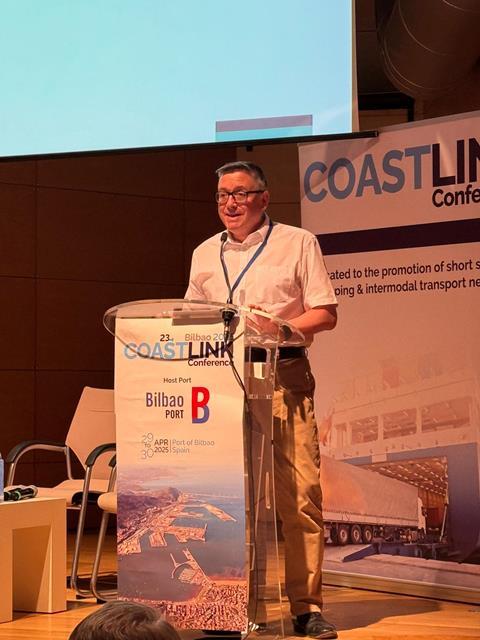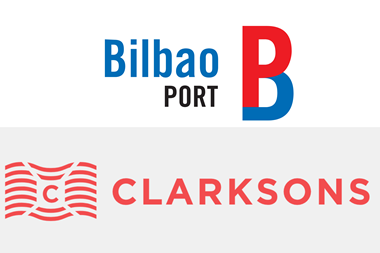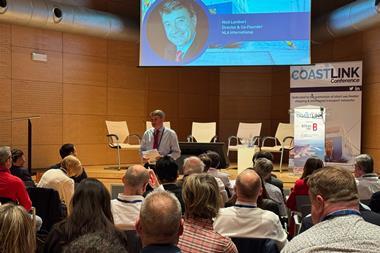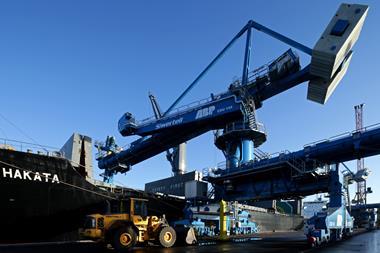Coastlink 2025 in Bilbao got off to a great start on Tuesday, that’s despite the national power outage. Perhaps yet another sign of how we work in such a resilient strong industry.

In the words of conference chairman, Nick Lambert, co-founder and director, NLA International Ltd: “Despite facing one tumultuous event after another in this industry, Coastlink is still here, shipping is still here and so are all the people that make it happen.”
And that led swiftly into discussions including how the critical window for shortsea shipping is here now but there’s a need to act quickly.
Nathan Alemany, senior marketing manager, Peel Ports Group, explained to delegates how although there’s plenty of opportunity ripe for the picking, it may not be possible to take advantage of it.
“The growth of the container market is being driven by shore sea shipping so the market cannot be underestimated, and this obviously has an effect on decarbonisation,” he said.
“It can reduce emissions, yet significantly drive economic growth in less coastal communities.”
Still hurdles
Yet obstacles still remain which have added to curtailing its growth.
The chief obstacle for more sustainable short sea operations is cost, as Mr Alemany explains cargo owners often have no choice when selecting shipping routes but to choose the cheapest option often involving multiple modes of transport.
“We need a level playing field with emissions taxation applied equally to all modes of transport, including rail and road, in addition to the costs of funding infrastructure.”
Then there has been the impact of the ETS trading scheme which he said could be working negatively to encourage transporting freight by road and rail.
Public policy has also had an impact. Five years ago there was marked switch to unaccompanied freight driven by the Covid pandemic, then there was Brexit, which no doubt encouraged avoidance of UK shipping routes.
Despite all of this Mr Alemany argues that coastal shipping is still a great opportunity for the UK.
He said that the Brits could look to the example of how the Rhine in Germany is used for shortsea shipping. In his presentation, he argued that the UK could even have more transhipment options than Germany, if the network was prioritised and the British Government were to get better at looking at transport and logistics as a whole.
“Supporting maritime services and routes to grow and develop when they offer emission and economic advantages will allow the sector to flourish,” he said.









